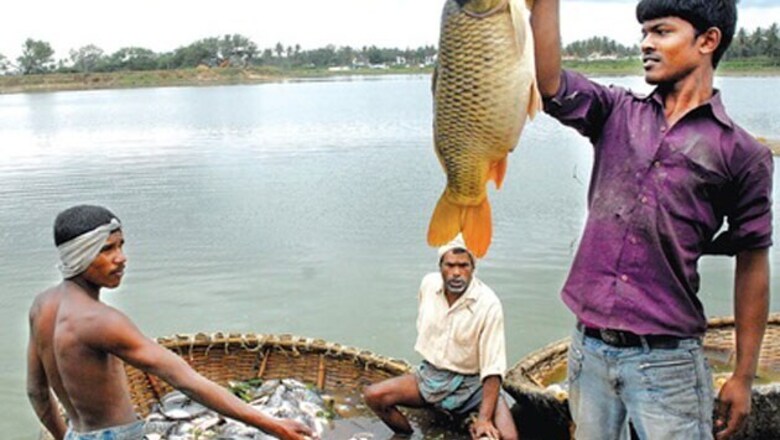
views
Bangalore: The recent policy adopted by the BBMP for rejuvenation of lakes and tanks in the city is completely skewed and ineffective as most of the water bodies that have been taken up for restoration have neither regained their pristine glory nor retained the flora and fauna. In fact, the 15 to 20 so-called restored lakes are completely dry and fallow today and have lost all the fish and the catcalls of the migratory birds from across the state.
The list of lakes that were restored in the city include the Kempambudhi, Yediyur, Narasipura, Sarakki, Uttarhalli, Puttenahalli where in the authorities spent a huge amount of the annual allocations but failed to restore them except for superficial alterations. Another aspect that the authorities have failed to realise is the city’s lakes are inter-connected and restoration should have focussed on a chain of lakes rather than a single lake in a particular locality. The policy seems to have addressed only the issues of public recreation, livelihood and fencing but not on the very important aspects of removing encroachments, water recharge and maintaining the existing biodiversity.
Once known as the land of thousand lakes, the city of Bangalore is today in the throes of searching for the remnants of a glorious heritage that boasted of a well laid and inter-connected chain of tanks and lakes that quenched the thirst and irrigated its fields in the bygone days. The city’s forefathers including Kempegowda and the Britishers had given a lot of thought and constructed many a lake and tank in the absence of any known water source to fulfill the needs of the then miniscule population. The climate of Bangalore was salubrious and temperatures bearable in the summer months because the 400 odd lakes in the city used to act as the perfect carbon sink apart from fulfilling the water needs of the populace.
But, over the next century, with rapid industrialisation and urbanisation, these water sources have disappeared in the guise of ‘degraded lands’ and even the authorities have colluded with real estate sharks to hand over these lung spaces for building bus stands, shopping complexes, residential layouts and apartment complexes. Every now and then, a hue and cry raised by ecologists and environmentalists have fallen on deaf ears as with land cost escalating, the government has not enforced any proper policy to retain or regain water bodies in the city of Bangalore.
Criticising the present policy of restoration of lakes by BBMP in the city, noted film maker and environmentalist Suresh Hebblikar says, “They should immediately put a stop to the concept of beautifying the water bodies. Even the jogging tracks should not be put up and instead we should concentrate on the most important aspect of removing the encroachments and go in for manual de-siltation.”
In the last few years, the BBMP which has been regularly carrying out lake restoration projects at a cost of `3 to 4 crore each has not been successful in its attempts as the methods followed are not scientific and thereby, resulting in dry and fallow water bodies. According to water management experts, with most lakes in Bangalore surrounded by garbage dumps and solid waste, there is an urgent need to first clean the area around the lake to ensure free flow of water into the lakes. But till date, the BBMP has been concentrating on carrying out only visible rejuvenation measures like erecting walking pathways, colourful benches and decorative boards.
“In fact, the jogging tracks around the lake affect rain water harvesting measures and therefore, they should go in for tree planting around the lakes which will strengthen the water retention capacity,” says Hebblikar and adds, “They are not following a scientific method of desilting the water bodies as the present method removes the whole of clay which carries a lot of bacteria and small plants. The earlier method of manual desiltation was better as one can see even now around the rural areas of the state, crystal clear lakes where such a method followed. Even the embankments have to be strengthened around the lake by planting small bushes which will retain rain water.”



















Comments
0 comment